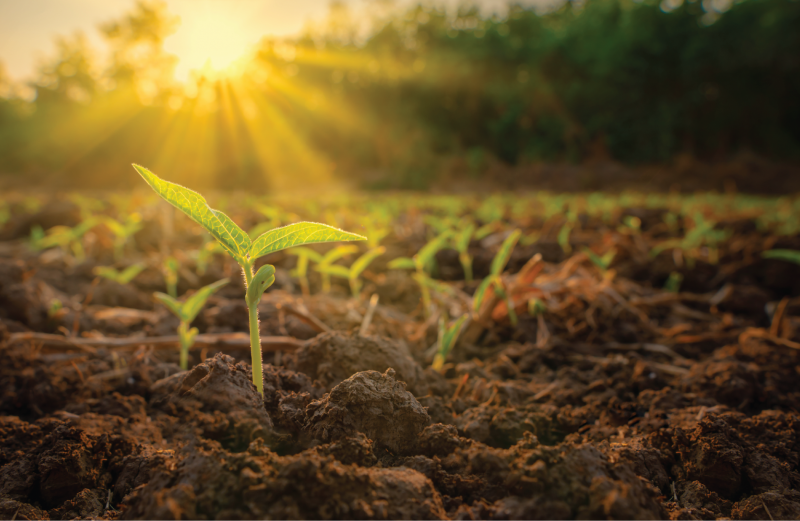Feeding Africa Through The Sun

This is the 19th post in a blog series to be published in 2021 by the Secretariat on behalf of the AU High-Level Panel on Emerging Technologies (APET) and the Calestous Juma Executive Dialogues (CJED)
The world dedicates about 20% of irrigation efforts towards agricultural activities, and this results in approximately 40% of the total food produced worldwide. Comparatively, Africa’s farming systems utilise about 5% irrigation in farming because Africa’s food production is predominately dependent on rainfall. Thus, inadequate irrigation to compensate for rainfall shortfalls in Africa leads to increasing food insecurity. This is the case, more especially since rainy seasons have since become unreliable due to climate change. At the same time, the ever-expanding and urbanising African populations require more food supply.
Notably, irrigation has the potential to enhance Africa’s agricultural productivity by up to approximately 50%. The area currently equipped for irrigation is slightly more than 13 million hectares, accounting for approximately just 6% of Africa’s total cultivated area.[1] Consequently, the African continent is encouraged to invest in irrigation expansion so as to make optimal use of the remaining 42.5 million hectares of unirrigated farming land.[2] Improving irrigation for Africa’s agriculture in Africa can address the increasing occurrence of extreme climate conditions such as prolonged dry spells, severe droughts, and unpredictable heatwaves. Furthermore, irrigation can benefit job creation and the over 53% employment capacity in agriculture. As such, irrigation can improve yields, reduce vulnerability to changing rainfall patterns, and enable multiple cropping practices.
However, irrigation requires intensive energy inputs to draw water from water sources to destined crops and vegetable fields. Electricity supply on the continent, mainly from hydropower and coals, is currently underserving and would not be sustainable as energy sources for irrigational activities at present. There is thus the need to address the energy challenge for irrigation to help African farmers effectively utilise irrigation systems for their agricultural activities.
The African Union High Level Panel on Innovation and Emerging Technologies encourages African countries to consider solar power as a potential energy source for irrigation systems in Africa. Through local innovation, solar energy systems can be utilised for irrigation systems through modelled and optimised pumping power systems.
What if there is inadequate sunshine in some seasons? The panel has recommended technologies useful to storing energy generated from solar systems. Africa’s adoption of microgrids (see APET Report: Micro-Grids - Empowering Communities and Enabling Transformation in Africa) and next generation batteries (see Upcoming APET Report) ensures that the solar pumping systems can have adequate and reliable power to operate efficiently. Noteworthy is that, besides installation costs, solar energy systems are cost-effective and require minimal maintenance protocols.[3]
There are recommended practices in Member States that others can learn from. The Kenyan government and development partners have implemented irrigation schemes that utilise solar-powered irrigation systems (SPIS) technology to irrigate crops through the Kenya smallholder solar irrigation project (KSSI).[4] Within this system, there is a photovoltaic (PV) array utilised as the energy source coupled with electrical pumps that lift water to a usable height and distribution systems.
Notably, solar water pumps (SWPs) have been used since the 1980s and have demonstrated reliability and are ideal for off-grid irrigation and livestock water supply. For example, Kenyan farmers can install SWP from approximately US $350 or higher depending on the daily water volume needed.[5] In these cases, the solar water pumping solutions cannot only provide water for irrigation systems but domestic water supply and water for livestock. Such systems can be deployed as either a standalone or hybrid system. Notably, the standalone system relies only on the solar PV system. As such, these systems can only work during the day when there is sunlight. This results in a low yield of water supplies. However, for the hybrid systems, where the solar PV is coupled with electricity from the microgrid and diesel generator, the pump can operate for longer hours and even at night.
Besides the economic benefits of cost-effectively pumping water within the farm, there are environmental advantages of utilising solar water pumps. For example, solar water pumps can significantly reduce irrigation carbon dioxide (CO2) emissions. This is because solar power irrigation systems can operate and achieve the level of performance close to diesel pumps without greenhouse gases emissions.[6]
In conclusion, African countries are encouraged to improve accessibility to reliable solar energy for irrigation from various water sources such as groundwater. Such measures can increase agricultural productivity and profitability, as well as enhance farm and agribusiness operations efficiencies. This can be accomplished through improved financial support to smallholder farmers leaning towards adopting modern irrigation systems.[7] Such irrigation supports achieving development frameworks such as the Maputo Declaration of 2003. Most importantly, such efforts can improve the farmer-led initiatives to improve profitability and ensure that irrigation does not harm the environment.
Featured Bloggers – APET Secretariat
Justina Dugbazah
Barbara Glover
Bhekani Mbuli
Chifundo Kungade
[1] https://www.ifpri.org/publication/what-irrigation-potential-africa#:~:text=Although%20irrigation%20in%20Africa%20has,of%20the%20total%20cultivated%20area.
[2] https://onlinelibrary.wiley.com/doi/full/10.1002/ird.2397
[3] https://www.sciencedirect.com/science/article/pii/S2213138817300966
[4] https://www.water-alternatives.org/index.php/blog/african-irrigation
[5] https://winrock.org/wp-content/uploads/2017/03/Winrock-KSSI-Handout-for-Farmers-2-9-17.pdf.
[6] https://cleanenergy4africa.org/adopting-solar-water-pumps-promising-prospects-for-africa/.
[7] https://www.longdom.org/proceedings/challenges-and-opportunities-for-revitalizing-smallholder-irrigation-schemes-in-south-africa-33544.html


